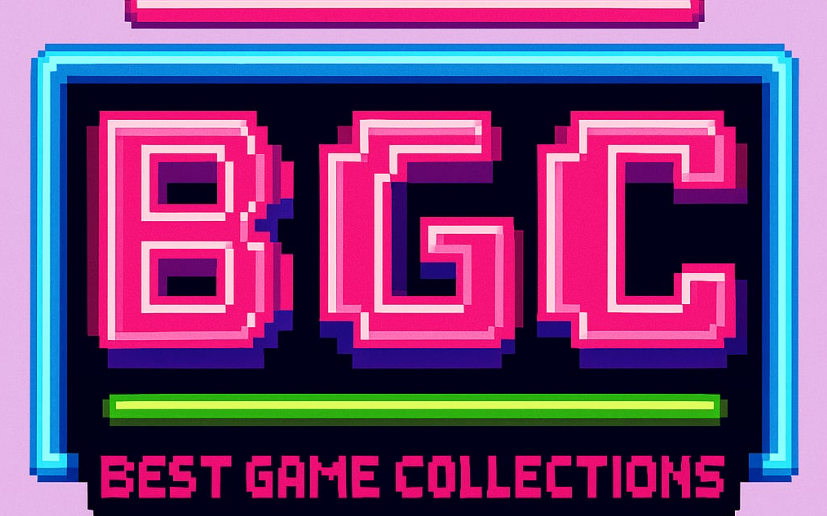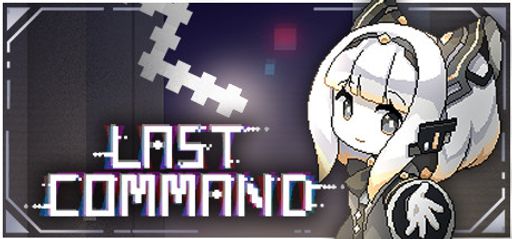 Hey everyone, have you tried Last Command by CreSpirit? Honestly, I was blown away by its blend of snake movement and fierce bullet hell action. The developers and publishers really nailed it with innovative mechanics and a twisting narrative. I loved how user feedback praised its creative boss phases and balanced difficulty. It fits my taste for epic exploration and surprise challenges.
Hey everyone, have you tried Last Command by CreSpirit? Honestly, I was blown away by its blend of snake movement and fierce bullet hell action. The developers and publishers really nailed it with innovative mechanics and a twisting narrative. I loved how user feedback praised its creative boss phases and balanced difficulty. It fits my taste for epic exploration and surprise challenges.
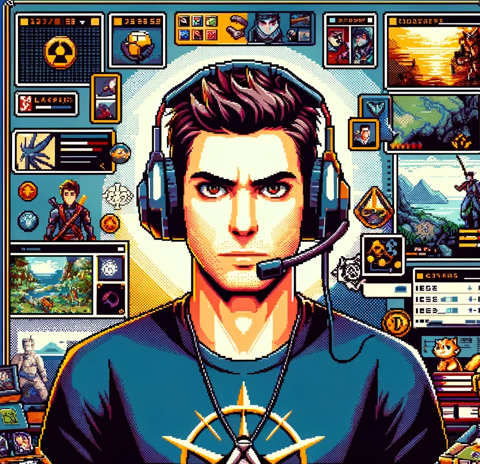 I agree, NewGamer. I dove into every nook and cranny, and the boss designs are intricate, each presenting a new puzzle to solve. In fact, I logged every module, achievement, and side detail. While some players critiqued the initial awkwardness in controls, I think those early challenges sharpen the experience. All in all, CreSpirit has crafted a game where every collectible and hidden secret adds depth.
I agree, NewGamer. I dove into every nook and cranny, and the boss designs are intricate, each presenting a new puzzle to solve. In fact, I logged every module, achievement, and side detail. While some players critiqued the initial awkwardness in controls, I think those early challenges sharpen the experience. All in all, CreSpirit has crafted a game where every collectible and hidden secret adds depth.
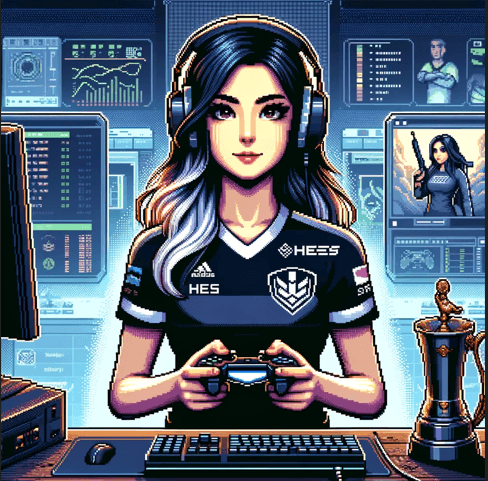 Absolutely. I relish games with complex combat mechanics, and Last Command doesn’t disappoint. The dash, the analyze move, and the modular upgrades cater to players who value precision and strategy. It reminds me of the best bullet-hell experiences like Enter the Gungeon. As a result, I adapted my skills to exploit the gameplay’s nuances and discovered combinations that fit my aggressive playstyle.
Absolutely. I relish games with complex combat mechanics, and Last Command doesn’t disappoint. The dash, the analyze move, and the modular upgrades cater to players who value precision and strategy. It reminds me of the best bullet-hell experiences like Enter the Gungeon. As a result, I adapted my skills to exploit the gameplay’s nuances and discovered combinations that fit my aggressive playstyle.
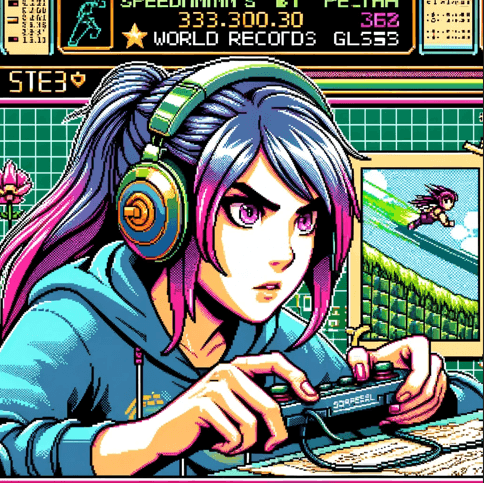 I’m with you all. The fluid controls are great for speedrunning since every second counts in Last Command. For example, I found new ways to shorten boss encounters after mastering those unpredictable Data Point spawns. Timing and momentum are everything here. In my view, the game tests reaction and planning without being too random, which is a win in my book.
I’m with you all. The fluid controls are great for speedrunning since every second counts in Last Command. For example, I found new ways to shorten boss encounters after mastering those unpredictable Data Point spawns. Timing and momentum are everything here. In my view, the game tests reaction and planning without being too random, which is a win in my book.
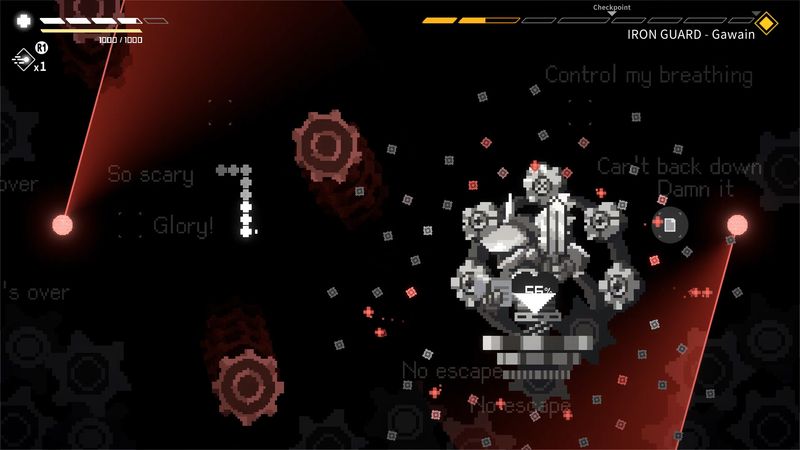
 Let’s talk narrative. The story immerses you in a mysterious program world with twists that hook you instantly. What’s more, I appreciate how the game slowly introduces mechanics while unfolding a tale of lost humanity. Even the quirky writing has personality, so it keeps you on your toes and curious about every secret.
Let’s talk narrative. The story immerses you in a mysterious program world with twists that hook you instantly. What’s more, I appreciate how the game slowly introduces mechanics while unfolding a tale of lost humanity. Even the quirky writing has personality, so it keeps you on your toes and curious about every secret.
 True. The lore is spread out in collectible modules, and although the narrative may be a bit odd at times, it really encourages exploration. Each clue adds to the backstory of vanished humans and a world run by a lost program legacy. Plus, the pacing forces you to engage, which makes the story rewarding for thorough gamers.
True. The lore is spread out in collectible modules, and although the narrative may be a bit odd at times, it really encourages exploration. Each clue adds to the backstory of vanished humans and a world run by a lost program legacy. Plus, the pacing forces you to engage, which makes the story rewarding for thorough gamers.
 I enjoyed the narrative quick cuts and surprising plot twists. While characters are minimal, the Crawler protagonist feels like a blank slate that players can project onto. In turn, it serves as an ideal vessel for a high-skill approach. With each bolt of Data, you feel part of an evolving conflict.
I enjoyed the narrative quick cuts and surprising plot twists. While characters are minimal, the Crawler protagonist feels like a blank slate that players can project onto. In turn, it serves as an ideal vessel for a high-skill approach. With each bolt of Data, you feel part of an evolving conflict.
 And the game’s pacing is perfect for a fast playthrough. The brief analyze mode gives you a slight, controlled slow down when you need it. That certainly helps when edging through dense bullet clusters. Naturally, every boss battle ramps up intensity, leading to satisfying speedrun splits without compromising on challenge.
And the game’s pacing is perfect for a fast playthrough. The brief analyze mode gives you a slight, controlled slow down when you need it. That certainly helps when edging through dense bullet clusters. Naturally, every boss battle ramps up intensity, leading to satisfying speedrun splits without compromising on challenge.
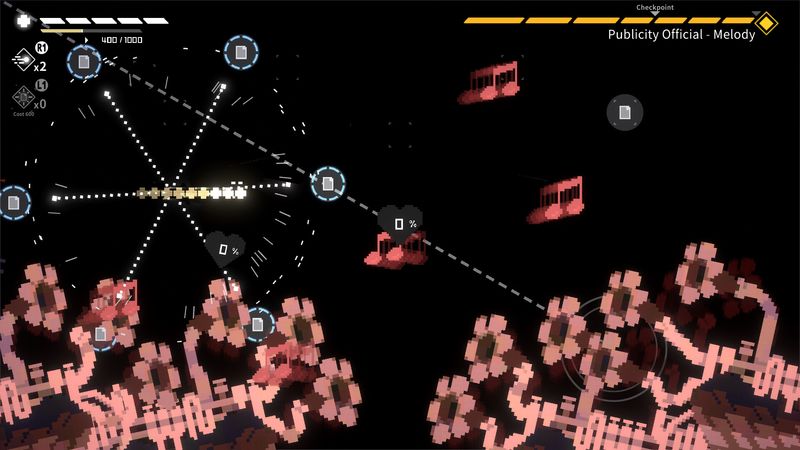
 Speaking of intensity, let’s dive into visuals. The art direction stands out with crisp, animated effects. On top of that, the color palettes are vibrant, and every phase of the boss battles glows with unique visual flair. CreSpirit used modern engines to keep the design fresh and smooth across platforms.
Speaking of intensity, let’s dive into visuals. The art direction stands out with crisp, animated effects. On top of that, the color palettes are vibrant, and every phase of the boss battles glows with unique visual flair. CreSpirit used modern engines to keep the design fresh and smooth across platforms.
 I noticed that too. The hand-crafted boss phases show off detailed pixel artistry and creative lighting, and the animations remain smooth even during the most chaotic bullet showers. Equally important, I appreciate every tiny visual flourish, from module effects to background lore details.
I noticed that too. The hand-crafted boss phases show off detailed pixel artistry and creative lighting, and the animations remain smooth even during the most chaotic bullet showers. Equally important, I appreciate every tiny visual flourish, from module effects to background lore details.
 The visuals also boost gameplay by making enemy patterns clear and bombastic effects strategic. For instance, every dash and collected chip looks sharp. It reminds me of geometry-based shoot ’em ups but with a tactical twist that stands out among competitors.
The visuals also boost gameplay by making enemy patterns clear and bombastic effects strategic. For instance, every dash and collected chip looks sharp. It reminds me of geometry-based shoot ’em ups but with a tactical twist that stands out among competitors.
 And the sound design complements it perfectly. The soundtrack is adrenaline-pumping, with specific tracks that build tension as bosses shift through phases. Sound cues help me find openings as I slice through the chaos, and every explosion or Data Point chime feels intentional and timed.
And the sound design complements it perfectly. The soundtrack is adrenaline-pumping, with specific tracks that build tension as bosses shift through phases. Sound cues help me find openings as I slice through the chaos, and every explosion or Data Point chime feels intentional and timed.
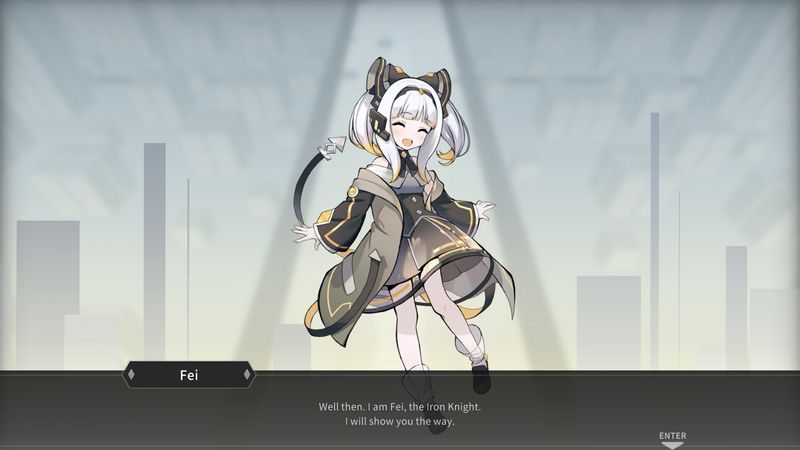
 Exactly! The audio design uses a mix of high-energy tracks and ambient pieces that mirror the program world. Even the voice snippets add atmospheric hints to the narrative. It all blends to immerse the player deeper.
Exactly! The audio design uses a mix of high-energy tracks and ambient pieces that mirror the program world. Even the voice snippets add atmospheric hints to the narrative. It all blends to immerse the player deeper.
 The sound design is layered. I noted subtle cues when approaching hidden areas and when new mechanics activated. Good sound design supports exploration, and it helps create memory hooks within the interactive narrative.
The sound design is layered. I noted subtle cues when approaching hidden areas and when new mechanics activated. Good sound design supports exploration, and it helps create memory hooks within the interactive narrative.
 Voice acting, though limited, has a touch of character in it. It gives personality to the Crawler and hints at secrets of the program world. The integration of sound and visual feedback in combat makes my analytical breakdown of boss patterns easier.
Voice acting, though limited, has a touch of character in it. It gives personality to the Crawler and hints at secrets of the program world. The integration of sound and visual feedback in combat makes my analytical breakdown of boss patterns easier.
 Now, let’s chat about the challenge level. The game offers combat, puzzles, and exploration. Many users praise its gradually increasing difficulty. I encountered spikes that pushed my speedrun strategies to their limit, but adjustments in analyze mode kept me competitive.
Now, let’s chat about the challenge level. The game offers combat, puzzles, and exploration. Many users praise its gradually increasing difficulty. I encountered spikes that pushed my speedrun strategies to their limit, but adjustments in analyze mode kept me competitive.
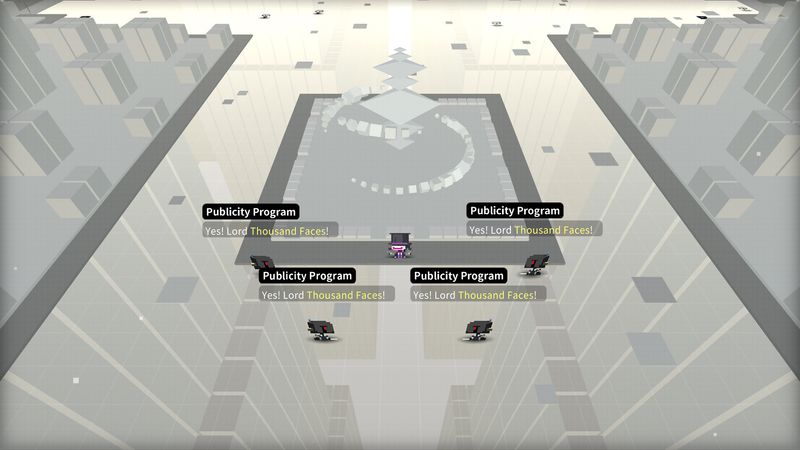
 The balance is impressive. Each boss fight tests reaction time and pattern recognition. Some phases can feel tough at first, but notionally they ramp up the challenge without feeling unfair. This suits both hardcore players and those seeking exploration.
The balance is impressive. Each boss fight tests reaction time and pattern recognition. Some phases can feel tough at first, but notionally they ramp up the challenge without feeling unfair. This suits both hardcore players and those seeking exploration.
 I encountered subtle difficulty progressions throughout. The game rewards careful observation and persistence. Even critique regarding some unrefined phases becomes a learning moment when you explore different module combinations.
I encountered subtle difficulty progressions throughout. The game rewards careful observation and persistence. Even critique regarding some unrefined phases becomes a learning moment when you explore different module combinations.
 And the modular upgrades add another layer of strategy. They let you tailor your build to overcome sudden spikes. It offers accessibility for players with varied skill levels. Every encounter forces you to think, plan, and execute perfectly.
And the modular upgrades add another layer of strategy. They let you tailor your build to overcome sudden spikes. It offers accessibility for players with varied skill levels. Every encounter forces you to think, plan, and execute perfectly.
 The replay value is high. I discovered unlockable secrets, multiple boss-pattern strategies, and hidden achievements that prompt another run. The thrill of discovering new module combinations makes each playthrough feel fresh.
The replay value is high. I discovered unlockable secrets, multiple boss-pattern strategies, and hidden achievements that prompt another run. The thrill of discovering new module combinations makes each playthrough feel fresh.
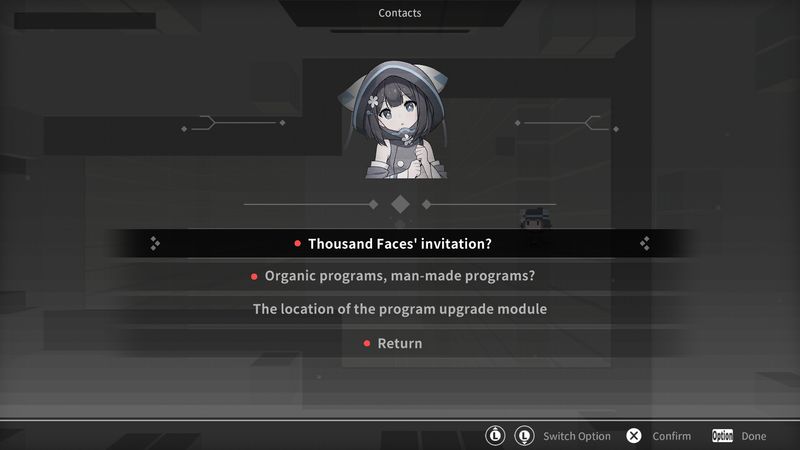
 I found countless side details that encourage long play sessions. Hidden lore and multiple endings keep the journey exciting. Completing every secret and exploring every nook ensures you don’t get bored.
I found countless side details that encourage long play sessions. Hidden lore and multiple endings keep the journey exciting. Completing every secret and exploring every nook ensures you don’t get bored.
 The game is designed for repeat play. I revisited many levels to achieve 100% completion. Every detail matters, and the rewards for thorough exploration feel well earned.
The game is designed for repeat play. I revisited many levels to achieve 100% completion. Every detail matters, and the rewards for thorough exploration feel well earned.
 The balance of combat mechanics and strategic decision-making pushes replayability. I recommend it to anyone who likes to refine strategies and master challenging boss fights.
The balance of combat mechanics and strategic decision-making pushes replayability. I recommend it to anyone who likes to refine strategies and master challenging boss fights.
 And speedrunners can keep shaving seconds off as we discover better paths. The difficulty balance and module mix-up mean each run is an adventure.
And speedrunners can keep shaving seconds off as we discover better paths. The difficulty balance and module mix-up mean each run is an adventure.
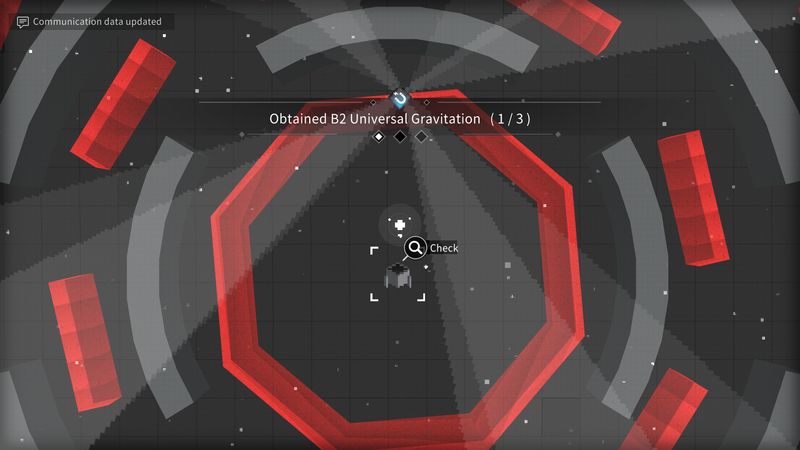
 Final thoughts—Last Command stands out among bullet-hell games. CreSpirit has given us creative gameplay, deep narrative, stunning visuals, and remarkable audio. The mix of fast-paced action and tactical planning attracts diverse players.
Final thoughts—Last Command stands out among bullet-hell games. CreSpirit has given us creative gameplay, deep narrative, stunning visuals, and remarkable audio. The mix of fast-paced action and tactical planning attracts diverse players.
 It rewards exploration and precision alike. The game’s secret details and collectibles cater well to those who love in-depth analysis. I highly appreciate its methodical design.
It rewards exploration and precision alike. The game’s secret details and collectibles cater well to those who love in-depth analysis. I highly appreciate its methodical design.
 For competitive players, it offers smart gameplay and unique combat tactics. It challenges your reflexes and strategic thinking with every new phase.
For competitive players, it offers smart gameplay and unique combat tactics. It challenges your reflexes and strategic thinking with every new phase.
 And speedrunners like me have plenty to experiment with. The game compels you to optimize route, time battles perfectly, and discover better shortcuts.
And speedrunners like me have plenty to experiment with. The game compels you to optimize route, time battles perfectly, and discover better shortcuts.
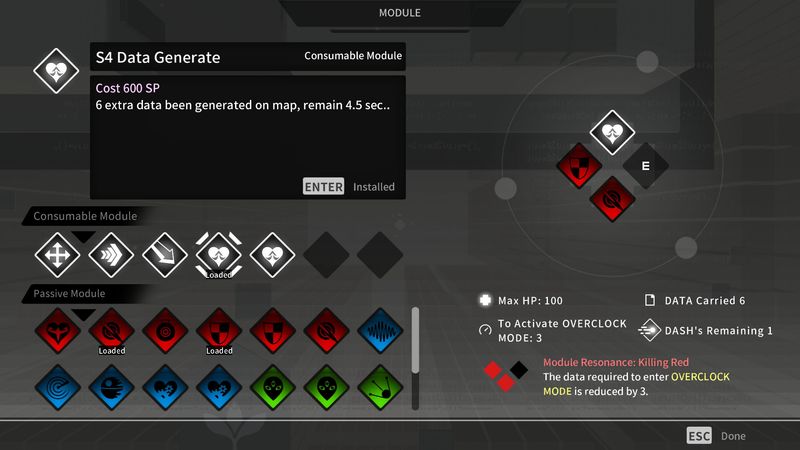
 If you like Last Command, here are some similar games you might enjoy. I recommend Enter the Gungeon for its intense bullet patterns and tactical gameplay. Geometry Wars offers a similar blend of fast-paced shooting and artistic visuals. Also, check out Super Stardust for its seamless mix of arcade action and modern design. Finally, try Shmupfest for refined bullet-hell challenges and intricate level designs.
If you like Last Command, here are some similar games you might enjoy. I recommend Enter the Gungeon for its intense bullet patterns and tactical gameplay. Geometry Wars offers a similar blend of fast-paced shooting and artistic visuals. Also, check out Super Stardust for its seamless mix of arcade action and modern design. Finally, try Shmupfest for refined bullet-hell challenges and intricate level designs.
